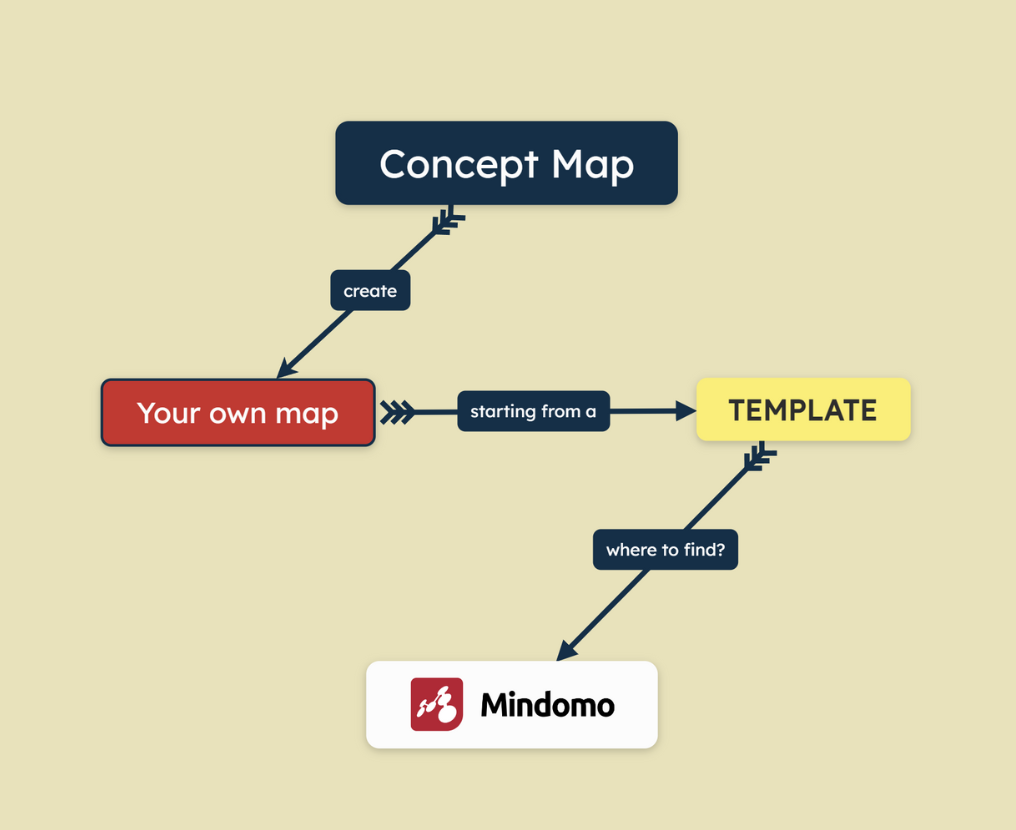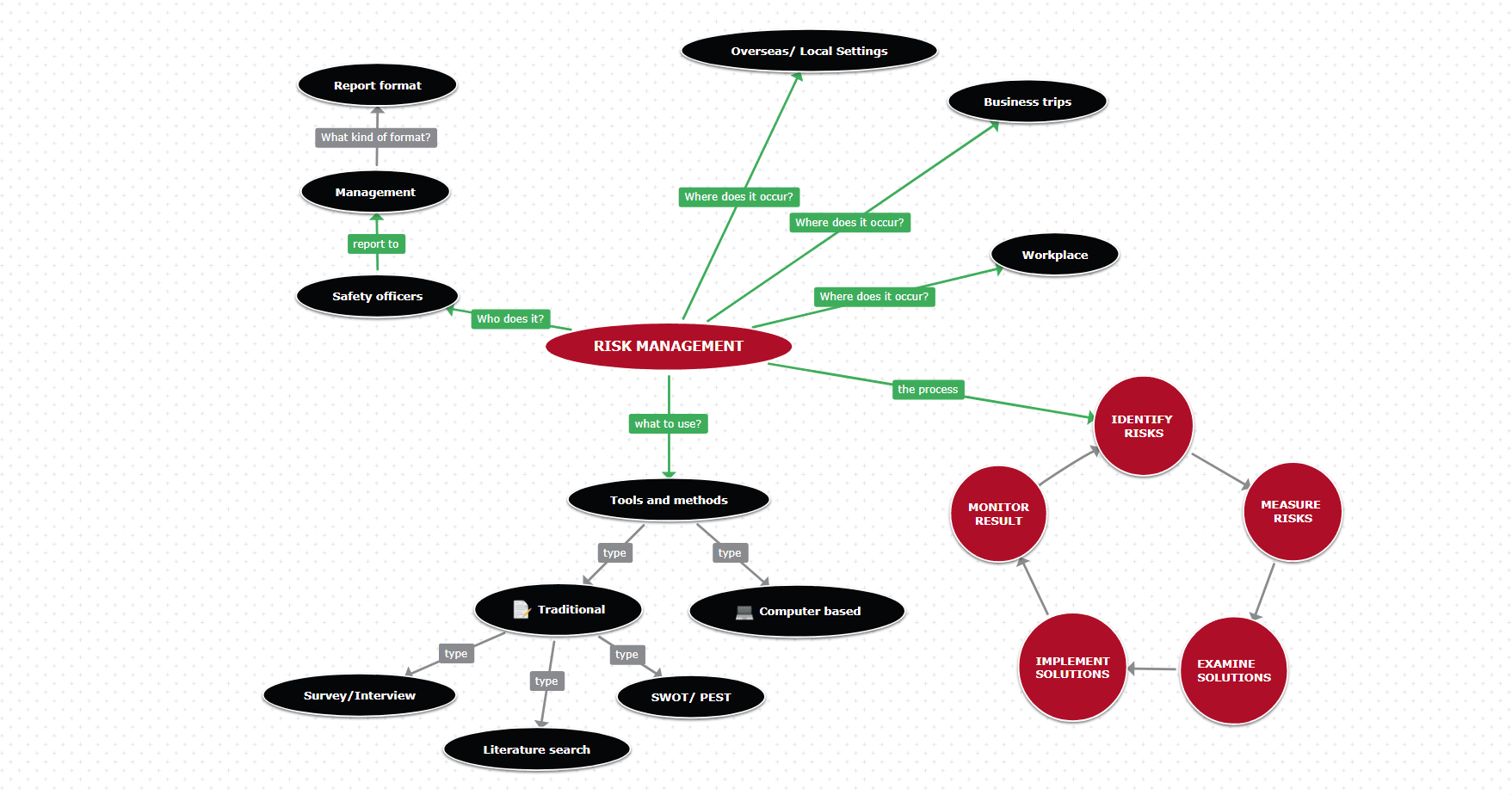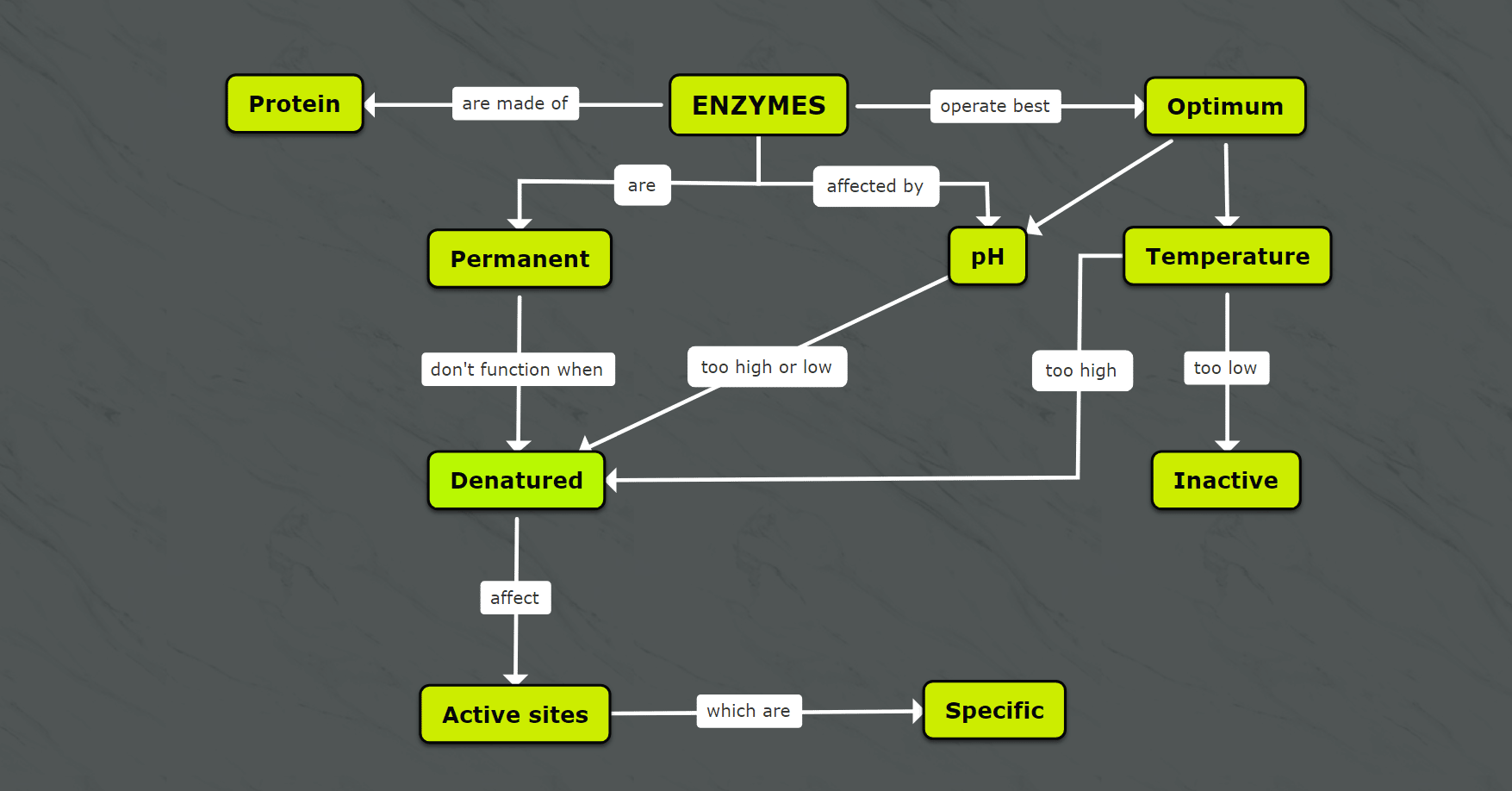TOP 6 Concept Map Templates
A concept map highlights suggested relationships between concepts. Ideas and information are usually represented as boxes or circles, connected with labeled arrows. The diagram structure can be a downward-branching hierarchical or free-form one.
Below are some of our most popular diagram templates. View, copy, and edit them by adding your own information. You can make a mind map customizing each template by editing it inside the Mindomo: click on the "Use this template" button, and then from the File List menu in the top left side, choose "Copy and edit".
1. Risk Management concept map
This is an excellent example of a business diagram where specific terms and procedures require further clarification. This visual diagram simply explains what is risk management, what it does, who implements it, when and with what tools, etc. The layout allows anyone to understand the concept easily. Different shapes and colors distinguish the elements.
2. Plant Parts concept map
Explaining complex ideas to smaller students isn't easy, but it gets easier with such a visual framework. If the information looks appealing, children will find it engaging and memorize it faster. Add icons, images, and videos, and use vivid colors and interesting shapes to make the diagram look good. Check out Mindomo's templates for kids to get more inspiration.
3. Math Divisions concept map
Concept maps are an alternative tool for teaching through association and a method for measuring knowledge and recall over time. Teachers can structure courses and create interactive assignments, while students can build solid, expandable frameworks for any knowledge area, as complex as it might seem.
4. Coffee Types concept map
Unleash your creativity and use a diagram sample to create amazing posts for social media or to show clients your products. For example, use this template to show what types of coffee you’re serving in your restaurant.
5. Fishbone Diagram
A fishbone diagram is another creative way of representing information. Use this visual representation to illustrate any cause-and-effect situation. Create it from scratch or use one of the fishbone diagram templates available.
6. Enzymes concept map
Prepare for exams smarter by making diagrams with key knowledge. You’ll notice that not only do you understand the information, but you can memorize it easily. With Mindomo, you can share your diagrams with classmates and learn together.
View all Mindomo Templates and pick your favorite ones, customize them, share them with collaborators, and export them.
Create collaborative diagrams easily and fast
Mindomo is more than a regular concept map maker. You can create a mind map to generate new ideas on your own. Then share it with others using the web-based version. It’s a perfect way to work together for assignments, projects, brainstorming sessions, research, etc.
All your diagrams are private until you decide to share them. Any diagram can be a private or public file. Read more about the available sharing options to choose the one that works best for you.
With just one click, you can convert your concept map into a mind map, Gantt chart, or outline. Mindomo offers you all the flexibility you need.
Start your diagramming journey today! Create your own diagram.
How to use a diagram template
Mindomo is a very easy-to-use software for concept mapping. Just follow these simple steps:
Step 1: Once you’ve logged into your account, click on the “Use this template” button. You can find it under each of the templates above. After that, once the editable template opens, click on the File List menu from the top-left corner and on “Copy and edit”.

Step 2: Now you can customize the template however you want. You can add more information, replace, delete or add more topics.
Step 3: Personalize the diagram. From the context menu (the white triangle from the top-right corner of each topic), you can add:
- Images
- Icons
- Video files
- Audio files
- Notes
- Comments
- Links
- Tasks
- Relationships between existing concepts

Step 4: Style your diagram regarding the topic’s appearance, shape, and text format.
Step 5: Drag and drop the topics to rearrange them as you like.
Find out more about how to use Mindomo and how to create conceptual diagrams by visiting our Help page or watching this tutorial:
It’s that easy to create vivid diagrams if you use our templates as a starting point. Create your Mindomo and get the most out of this software!
Concept map vs Mind map
The major difference between concept maps and mind maps is that the latter are hierarchical, while the former are not. While a mind map has one central theme, a conceptual diagram shows the relationships between different ideas, with no tiers or levels.

When to use concept maps?
Now you know more about what is a concept map and its main elements. Let’s see when and how you can make the most out of it. Being a versatile diagramming technique, it can be used in many ways:
- teaching through building relevant associations
- measuring knowledge and recall over time
- effective knowledge management
- personal improvement, etc.
Diagramming in education
Conceptual diagrams have been successfully used in education for over two decades, and research shows their use in various settings is increasing.
If you are a student, using these diagrams will simplify learning. You will identify connections easily and understand them better. You will learn the material from the text labels in the diagram and from building the visual structure. Also, focusing on essential relationships might seem easier than decoding a written text.
As a teacher, you can integrate conceptual diagrams into each week’s class as a way to teach by building relevant associations. Students can work individually or in groups to create visual representations of their acquired knowledge.
Conceptual diagramming supports learning from smaller-grade topics (animals, colors, foods, plants) to higher-grade ones (chemistry, physics, biology, anatomy, math, literature, etc.).
For more inspiration, see our 40+ conceptual and mind map ideas for students.
Diagramming for business
From planning a new product launch to restructuring your team, organize strategic and creative ideas in a conceptual diagram.
A conceptual diagram can be invaluable in a business setting. It’s a versatile, flexible, and intuitive way to gather and convey information. You can use it to structure business plans, perform product analysis, plan business meetings, find new development ideas, manage processes, and more.
Diagramming in personal life
Have you ever felt overwhelmed by countless ideas and goals, not knowing where to begin? Are you eager to create a vision board or explore a new passion? Start using conceptual diagrams to harness self-reflection and deeper understanding.
Jot down a central theme and branch out with related thoughts. Your free-flowing ideas won’t be constrained by linear thinking. Group related ideas together to simplify complex information. Use various images, colors, and symbols to differentiate ideas and enhance engagement. Continuously revisit and refine your diagram as new ideas emerge.
Advantages of concept mapping
Flexibility: Conceptual diagrams offer more flexibility compared to mind maps. In Mindomo, you can easily move diagram topics anywhere on the map canvas, without altering the structure.
Self-explanatory content: The connecting lines between ideas represent the relationships between them. These lines usually contain one or more words that add context to the diagram, enhancing shared comprehension and understanding.
Organized knowledge: Using a conceptual diagram is one of the easiest ways to organize knowledge without the pressure of building a rigid structure.
Collaborative: “Two heads are better than one” – great ideas can appear when more people brainstorm together. Create your diagram in collaboration and Mindomo will let you edit it in real time! Use any of our templates online and edit them with your team members or friends.







